How many people in Britain ever waited until their 18th birthday before they ordered their first alcoholic drink in a pub? Not you, I bet, and not me, certainly.
In fact this year marks half a century since I started regularly drinking in pubs, and as I’m still a little shy of 68, you may assume, correctly, that my earliest out-of-home pints were seasoned with the spice of illegality. Not that it was much of a spice: 50 years ago bar staff, and the authorities, bothered even less about not-quite-legal under-aged drinkers than they did about drink-driving, which was not, shamefully, taken very seriously at all.
Not that I drove to the pub: strictly public transport. Onto the 801 bus, my throbbing green diesel-powered Routemaster to pleasureland, and away to Stevenage Old Town, where the High Street, once part of the Great North Road, offered a sufficiency of pubs, all ancient and characterful, to satisfy the keenest crawler. (And all a total contrast to the soulless boxes that were the pubs on the new town estates. But that is another essay, for another day.)
Not, either, that I crawled that much back in 1969: there were two pubs out of the eight on the High Street itself where most of my pals would be found, so those were the two where I did most of my drinking. Generally Friday and Saturday evenings those pubs would be rammed almost to bursting with, largely, under-20s drinking pints (or brandy-and-babycham for the teen females: at least, that was what they always seemed to be drinking when I was getting the rounds in). I don’t recall any trouble or violence: the physical aggro was restricted to the only two pubs in Stevenage’s vast pedestrian shopping centre, and mostly to only one of those, the Edward the Confessor, know universally as the Ted the Grass..
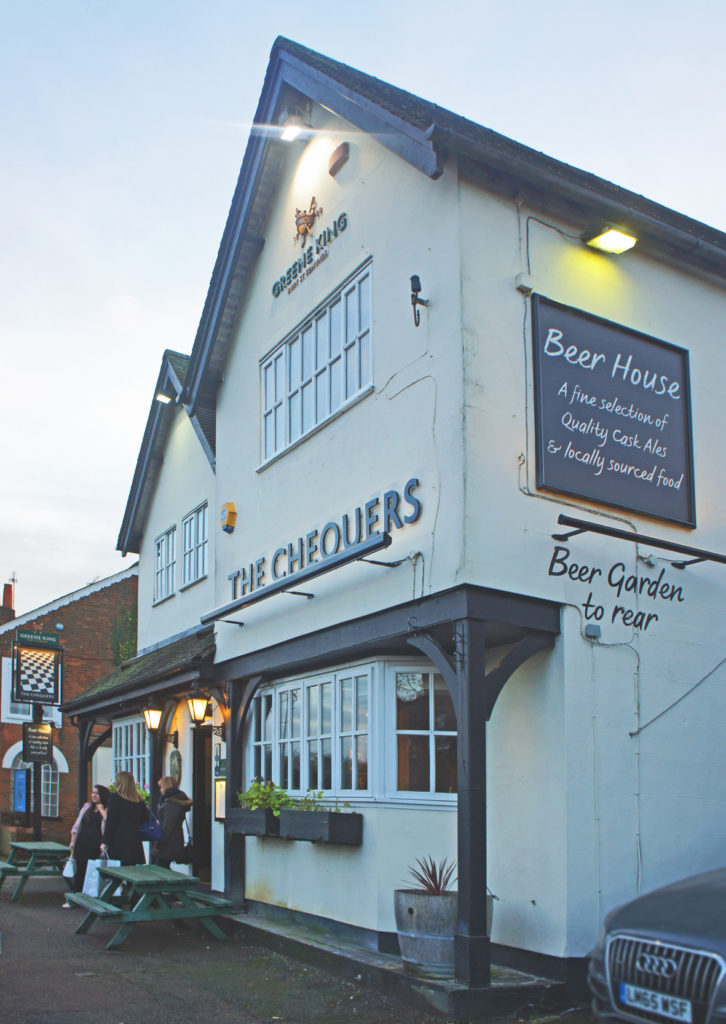
I moved from the town almost four decades ago, back to London, where I was born: grandparents, parents, uncles and aunts have died, other friends have moved away, and now my brother has sold his house in Stevenage to move permanently to enchanting Norfolk, cutting the last big link I have with the town I moved to when I was two. I went up a few months ago for a last look round, a couple of weeks after Lewis Hamilton, who also grew up in Stevenage, infuriated most of its inhabitants by calling it “the slums” on the BBC (he did correct himself immediately, but Twitter, of course, was already ablaze). No better way to say goodbye, my brother and I decided, than one last pub crawl down the High Street, starting at the bottom and moving north until we’d had enough.
Stop number one, the Chequers, was not, in fact, a pub that featured regularly on my nights out, being out of what today would be called “the circuit”. It was once, until the middle of the 20th century, the first drinking place travellers saw as they entered Stevenage proper from the south up the main road from London to York. The building of the new town’s huge pedestrianised shopping centre obliterated a long stretch of the old Great North Road at the gateway to the Old Town, and left the Chequers down what had become a largely unhurried cul-de-sac. It’s a quietly attractive, faintly arts-and-crafts influenced building, rebuilt in 1889 at a cost of £500 by its owners at the time, the Lytton family of Knebworth House, a couple of miles to the south, who were the big local landowners. (Edward Bulwer “dark and stormy night” Lytton was a big friend of Charles Dickens, which is why there was once a pub about 400 yards down the Great North Road from the Chequers called the Our Mutual Friend, after one of Dickens’s novels, which opened a month or so after the novel was first published: that pub is now demolished, but the name was transferred to a newly built pub in the New Town, close to where I grew up.)
When I started going into pubs regularly, about 1968/69, the drinkers at the Chequers were mostly Old Towners whose ancestors had lived in North Hertfordshire for, probably, 500 years or more, and who spoke in a noticeably different accent from the tens of thousands of New Towners, like my parents, who had moved to North Hertfordshire in the early and mid 1950s from North London suburbs such as Willesden and Burnt Oak, 30 miles to the south. (A few years ago I met a work colleague of my wife, and recognised her accent immediately: turned out that she had grown up in a village about two miles outside Stevenage.) Today the Chequers is probably one of the best pubs in Stevenage: its two bars, almost inevitably, have become one, but the deep black, hefty, solid oak serving area, surrounded by black and white floor tiles, the settles and oak table, have a comfortable pubby authenticity as welcoming as a hug from your favourite aunt, and although it is still owned by Greene King (who took over the local big brewer, Simpson’s of Baldock, in the 1950s) the beer range is excellent: the first place I can remember finding two dark milds on sale, one Greene King’s own, the other from the Tring Brewery away over the other side of the county.
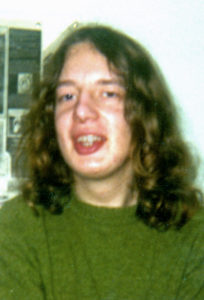
Teenage me, beamed forward half a century, would still probably not come in here, since there continued to be no other teens in the place, even if there would not be the slightly hostile vibration there was in 1969 from middle-aged small-town working class pub-goers against somewhat feminine-looking 17-year-olds with wavy hair down to their shoulders. (My father, a bricklayer, once told me that one of his fellow brickies, astonished by his toleration of his sons’ long hair, asked him why he did not take the scissors to us while we slept.) Teenage me knew next to nothing about beer, except that he liked the taste, and he had not yet realised that there was good beer and bad beer (that would only come a couple of years later, at university in a town dominated by Watney’s). Teenage me went to the pub to meet friends and chat, in particular try to chat to girls (with almost no success). The Chequers in 1969 was not a place to find girls to try to chat to. Old man me, however, now with very much less hair, was entirely happy to be drinking in the Chequers, however. Still no teenage girls in there, but, of course, they’d be even less interested in me today than they were 50 years ago, and the lack of interest among girls in the 1960s in getting to know spotty teenage me better was an almost solid thing even then.
I have always enjoyed the atmosphere of pubs, what Iain Banks in one of his novels calls the frague, the almost indefinable vibration that a good pub has going on between its walls, the interaction of multiple people intent on having an enjoyable experience, the surroundings (which should be a barely heard basso ostinato of warmth, comfort and security), and friendly, attentive service, that makes even sitting in a bar on your own a pleasure. I still enjoy the crack that comes with good company in a good pub, too. Now, however, the beer is probably the most important part of the mix, up from something that didn’t matter at all when I was a teen. Great pub, poor beer or poor pub, great beer? Today it would have to be a really great pub, a “not to be missed”, to make up for the beer not being up to scratch. Fifty years ago, teenage me would have considered that an incomprehensible question.
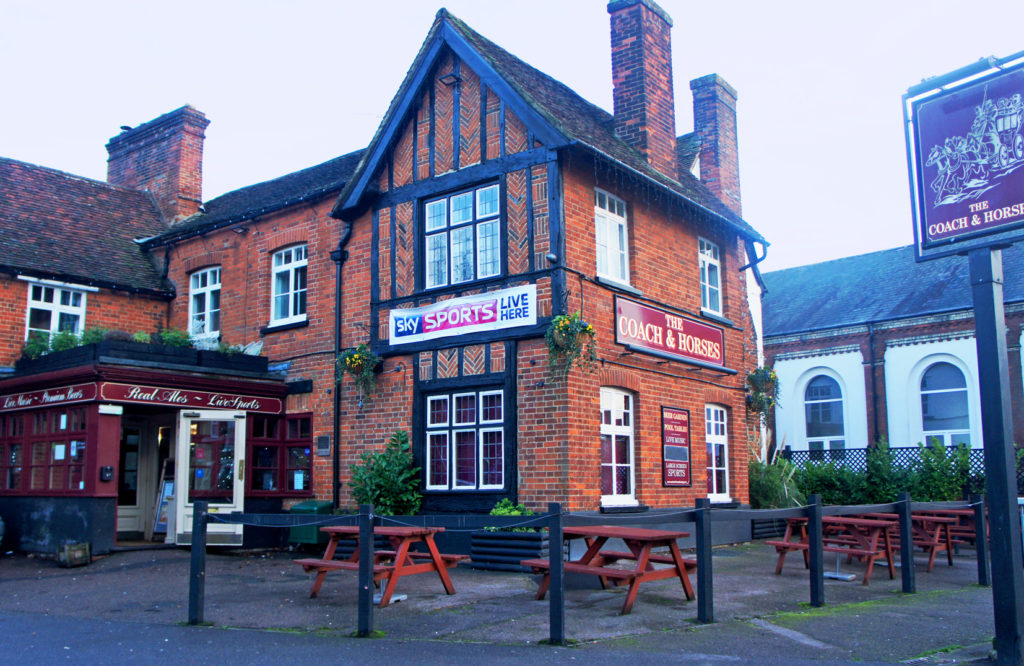
It was poor pub, poor beer at the next stop on the anniversary crawl, another place I rarely visited 50 years ago, the Coach and Horses. Despite being quite attractive on the outside, a solidly built 19th century brick-and-red-tile inn that, as the sign suggests, catered for travellers until the railway arrived in the town in the early 1850s, this never had much appeal to teenage me, being, like the Chequers, mostly full of people then twice my age or more, and an early example, if I recall correctly, of the banquette and padded Windsor chair style of pub furnishings. In 2019 the interior is now darker and more basic, and the large pool table in the knocked-through bar attracts exactly the sort of customer you would expect to be attracted to a large, dark bar with a pool table. The one handpump had the clip turned round, so it was a half of Hop House 13 (strange how Guinness still provides the one fall-back for a discerning drinker in a pub with no properly acceptable beer, but now in the form of a flowery pale lager-like beer rather than a bottle-conditioned stout) and off up the road.
Pub number three on the anniversary crawl is probably the one I spent most time in during 13 or so years of drinking beer in Stevenage, the Marquis of Lorne. A converted 17th or 18th century cottage built of now worn red bricks, it is named for the man who married Princess Louise, one of Queen Victoria’s daughters, in 1871, and thus ought, pedantically speaking, to be the Marquess of Lorne. I doubt the signboard has ever carried the correct version of the name. The Marquis is a rare example of a pub that still retains its original two drinking spaces, a “tap” or public bar at the front and a long, narrow saloon or lounge bar at the side. For reasons that remain unknown to me, I and my teenage friends drank exclusively in the lounge bar, though, this being the 1960s, when the distinction still remained between public and saloon, we were probably being charged a couple of pence or more per pint for the privilege of carpet on the floor and cushions on the seats than the drinkers in the more basic, bare-boarded tap. Nevertheless, the lounge bar of the Marquis was hugely popular, and frequently, on a Friday or Saturday night, more rammed with teens than a telephone box filled with rag-stunt students. This is not an exaggeration. Sometimes it was almost impossible to move.
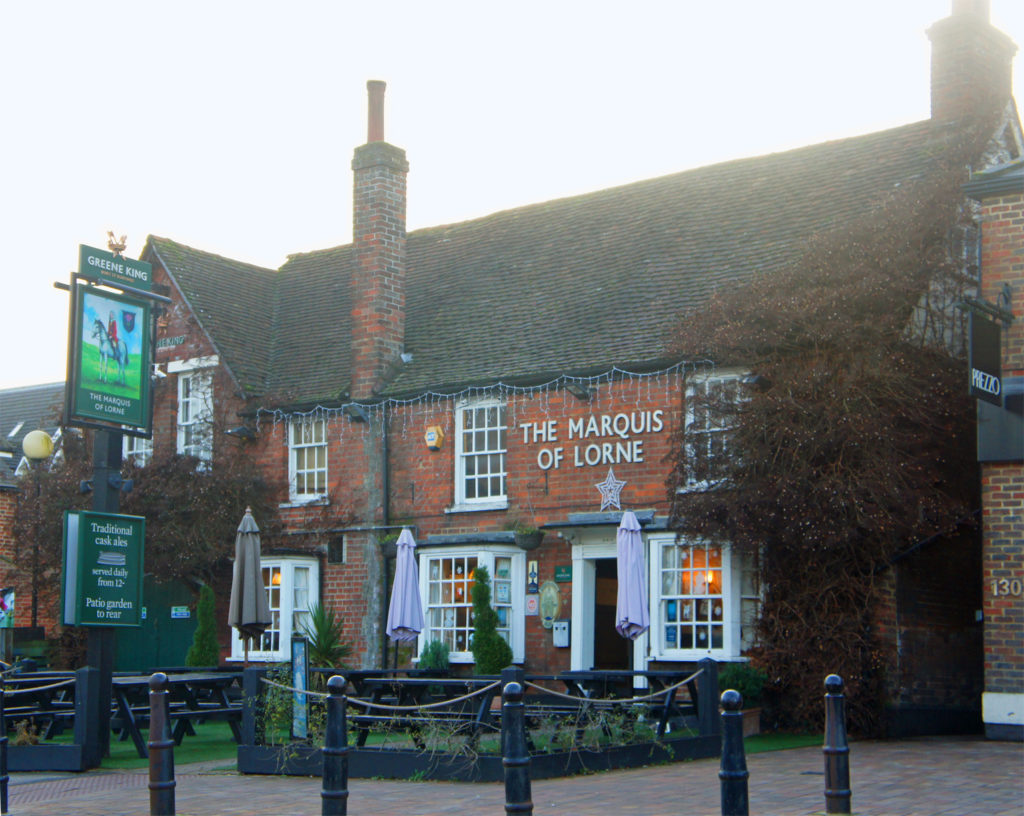
The draught beer in the Marquis 50 years ago was, I now know (and certainly didn’t then), top-pressure: cask ale, brewed at the former Wells and Winch brewery in Biggleswade, up the road in Bedfordshire, but served up from the cellar with the help of a cylinder of CO2, the taps on the bar shaped like miniature porcelain handpumps. Greene King IPA was the most popular choice, but nobody called it “IPA”: the order was always for “a pint of bitter”. Nobody, that I can recall, drank lager: there might have been a Harp fount on the bar counter, and there were bottles of Satzenbrau, Guinness’s attempt at a pilsner, on the shelves behind. Teens, of course, did not drink mild (that was what your dad drank), and I don’t recall seeing Greene King’s excellent dark mild on sale in any Old Town pub, though since my beer consciousness was minimal in 1969, consider me a deeply unreliable memorialist. Other Greene King pubs in the Old Town still had proper handpumps, though teenage me failed to notice any difference in the quality of the beer. What did I know? Forgive me, at the time I had probably drunk the products of fewer than half a dozen breweries. (It would, in fact, be another nine years or so years before the Marquis got its handpumps back, as Greene King finally caught up with the real ale revolution that began in 1971: by that time I was vastly more beer-aware, and on the local Camra branch committee, and we recorded these changes.)
Today the Marquis seems pretty much unchanged, the alterations in 50 years minimal: of all the pubs on the 50th anniversary crawl, it is the one teenage me could step into today without blinking. It has kept the pubby vibe, the smart but comfortable feel that would have made it worth visiting even if it had not been so popular with my teenage peers. Unlike the Chequers, the beer selection is entirely GK, but while nobody’s heart leaps today at the sight of a GK IPA handpump the way we did in 1978, when it meant another gain for the anti-fizz cause, when it’s looked after, GK is entirely acceptable: the Marquis wouldn’t, now, be my first choice of Stevenage pub as it was in 1969, but if you suggested it, I wouldn’t insist on going somewhere else.
The next pub going north 50 years ago, the White Hart, closed in 2010, and is now an Indian restaurant. I spent more time here after I became beerily “woke”, around 1975, than I did as a teen, since it was a rare local outlet for Ind Coope of Romford and, thus, their Burton ale and KK light mild (and, later, the revived Benskins bitter, named for the former Watford brewery), and I miss those vanished beers more than I do the pub.
Happily, the Red Lion, smallest of Stevenage’s former coaching inns and third call on the anniversary crawl, is still open: this was the other Old Town pub deeply popular with teens half a century ago, and it still seems popular with their grandchildren. Teenage me might have been slightly puzzled by the music being played over the sound system today, late 1970s heavy metal and its derivatives, but not that puzzled: I was an early fan of Led Zeppelin (I owned, and gave away, one of the first copies of Led Zeppelin I, with the turquoise lettering on the cover, which would be worth several hundred pounds today: ho hum) and I remember being deaf for at least an hour after sitting in row E for a Zeppelin concert circa 1970 at the Albert Hall. The pub is now properly a music venue, with regular rock band appearances at weekends and an annual “Redfest”, and it is with intense amusement that I note one band due to perform there this October, Gridlock, does a version of “Whole Lotta Love”, a song itself 50 years old this year. (There’s a theme for another essay: it’s like 1969’s teens and early 20s listening to the Original Dixieland Jass Band. What is the continuing attraction of granddad’s music?)
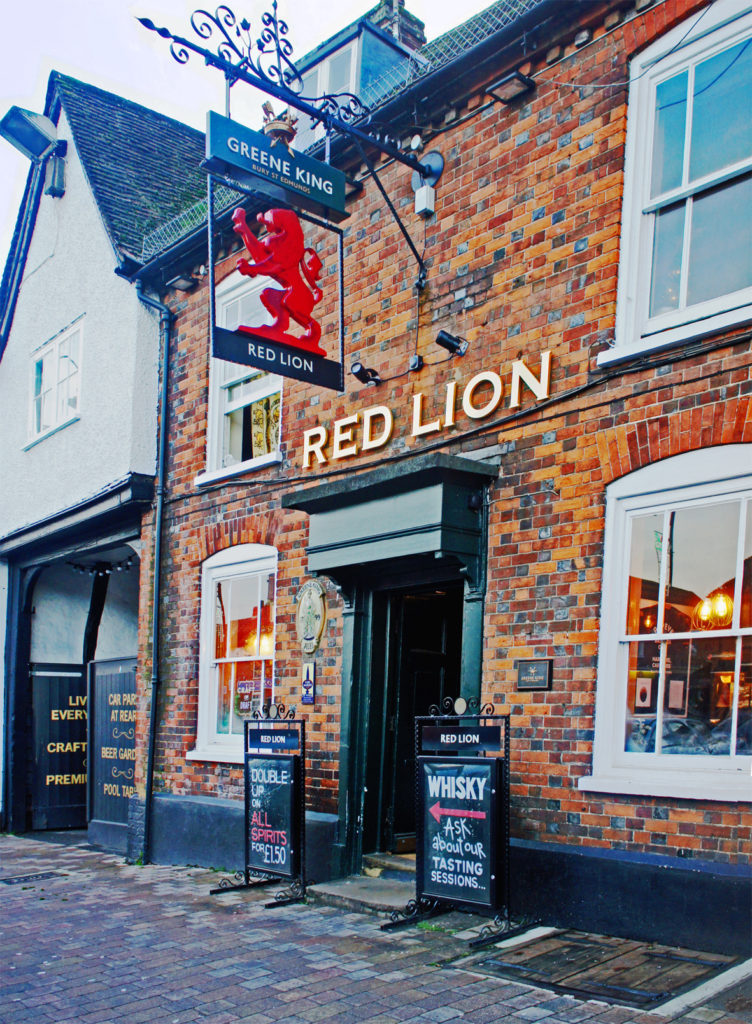
The Red Lion’s interior has been worked over, the back bar extended sideways into the courtyard where coaches once pulled up to have their sweating, tired teams of horses changed, and it is now possible to walk from the front bar to the back without going outside and through the arch that connects the courtyard with the High Street. The unbelievably manky men’s urinals, with their strange bright green mossy growths on the walls, have vanished, and so have the bar billiards table, and the darts board, where George Newberry, the tall, thin, elderly landlord, and a former News of the World darts champion, would occasionally come out from behind the bar and demonstrate how to hit treble 20s with six-inch nails, a performance even more remarkable since he had artificial legs. The walls, at least in the back bar, are now painted black rather than the nicotine-stained light caramel they were 50 years ago. (When the pub was decorated in the late 1970s, the brewery – Greene King again – actually chose a shade of paint almost identical to the effects of 40 years of cigarette smoke on white emulsion: perhaps Farrow & Ball should try adding “Public Bar” to its shades of cream and off-white.)
I find it hard to explain why the pub, in particular the back bar, was so popular with 1969’s teens: it was a classic Old Town boozer unchanged, at that time, since at least the Second World War, and should have been full of cloth-capped middle-aged Old Towners drinking the probably well-looked-after hand pumped bitter, or Abbot, and smoking roll-ups with, in the front bar only, their wives drinking Babycham or a small sweet sherry. Likely it was because George the landlord (his wife was known, inevitably and semi-accurately, as the dragon) was entirely laissez-faire about under-age drinking, provided you bought him the occasional rum-and-pep. Once it became a. place for teens to meet, and drink, then it stayed a place for teens to meet, and drink: we went there because we knew our friends were likely to be there. We might have driven the locals out, but we packed the place, and drank, very likely, as much as they would have.
After George and his wife retired to a home for ex-publicans, the Red Lion became more biker-oriented, and eventually music-oriented, and in half a century it has not lost its attraction to that apparently constantly renewing demographic in its 20s which enjoys shaking its hair to very loud guitar solos. Would teenage me still enjoy going down the Red Lion? Yes, I’m sure I would think it was tremendous. What about 50-years-on me? I have no problems still with loud music designed to make the audience bounce up and down – the last concert I went to, in June, was the fabulous Hot 8 Brass Band from New Orleans, which was strictly standing room only – but Led Zep covers, perhaps not.
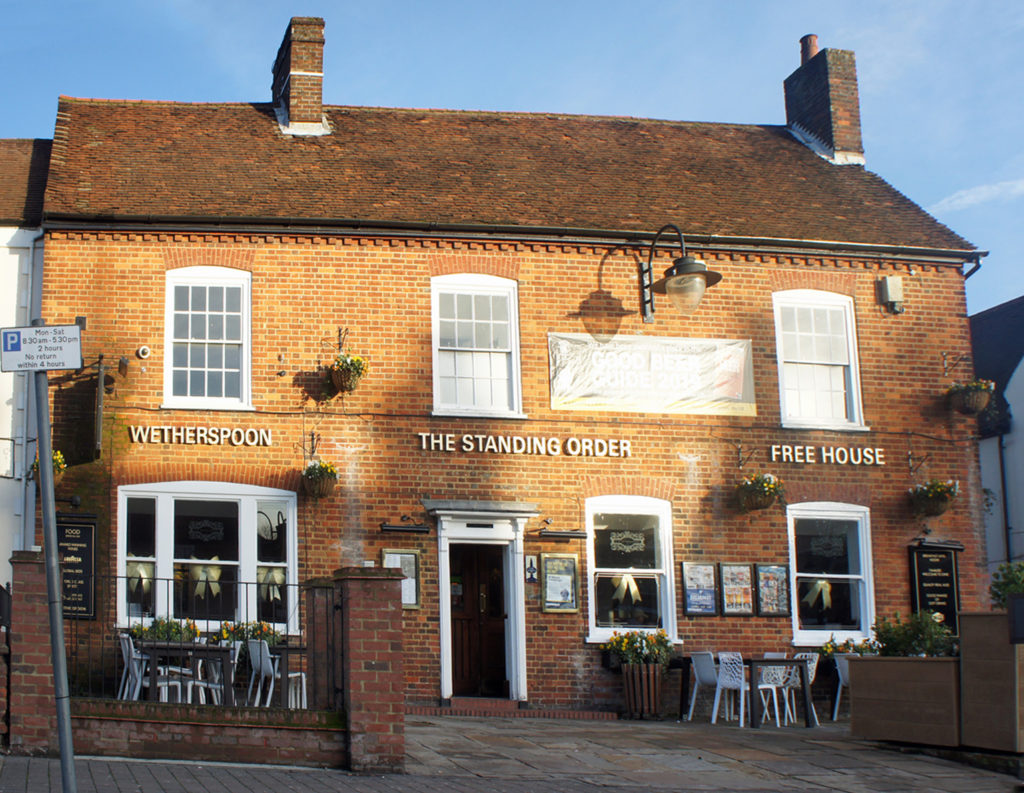
However, we have a pub crawl to finish, so drain that pint and on up the road, past the two bars in the High Street that have opened in the past 50 years, balancing the two that have closed (the new pubs are a Wetherspoon’s in, inevitably, a disused bank and another large outlet in a former hardware shop, which at one time was selling a beer called Four Candles) to what was once Stevenage’s leading coaching inn. This thrived under the sign of the White Lion for more than 400 years: Greene King, with the thoughtless ignorance that characterises the company’s attitude to its heritage, decided to toss that in the skip four years ago and rename the inn the Mulberry Tree, for no known reason.
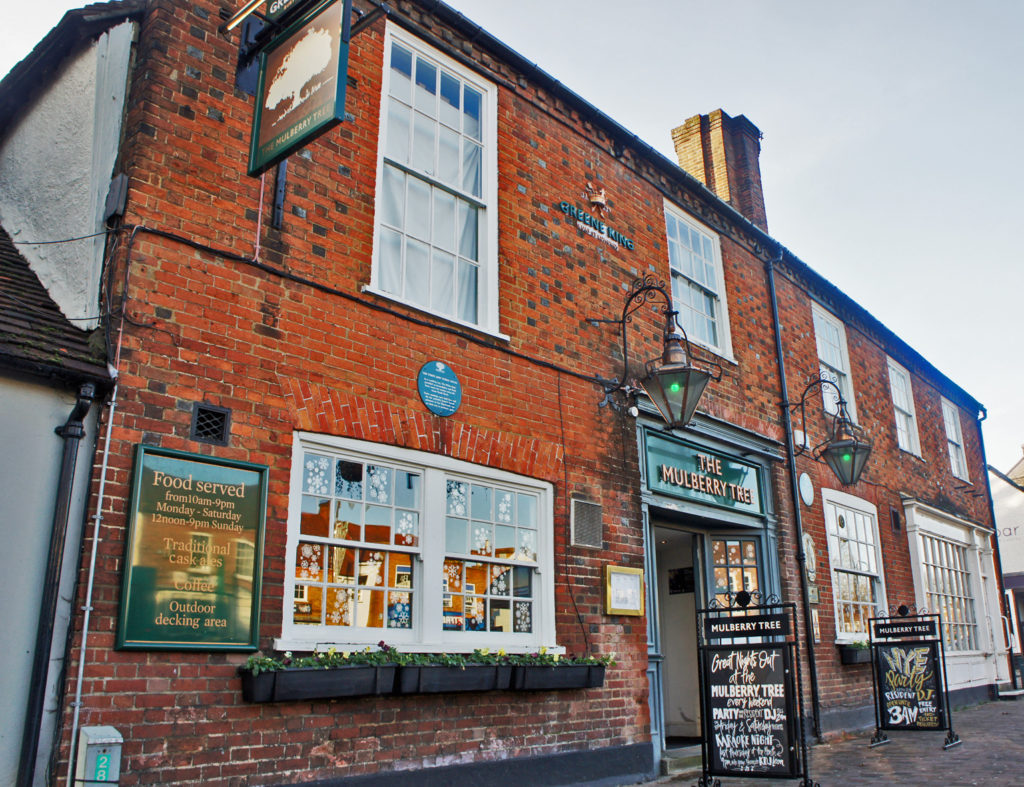
It’s another attractive old red-brick 18th century building on the outside, and another that I didn’t use that much as a teen: this was the most up-market of the Old Town pubs, popular with young couples on their tenth date, and my only reason for revisiting was to see how much it had altered. Teenage me would not have recognised the interior: the bar had been completely repositioned, the layout chopped about, walls demolished, and the entire set-up now making it clear this was a place expecting you to dine rather than drink: pub dining, of course, is a phenomenon that became widespread only in the past 30 years. The Mulberry Tree, like the White Lion, probably remains popular with young couples on their tenth date: teenage me would hate it, and modern me was pretty underwhelmed.
Conclusions? It was a surprise to me to realise, reflecting on the changes in the pubs, how much I had altered myself as a pub-goer in half a century, without losing a love for pubs. Thank heavens, frankly: going down the pub played a large and enjoyable part in my life 50 years ago, and I still enjoy it greatly today, but for wider and, I think, deeper and more considered reasons. I have no idea how many pubs and bars I have been in, from Sydney to San Francisco, since I first started drinking in Stevenage, but the ordinary British boozer remains my favourite place to have a beer, after 50 years.
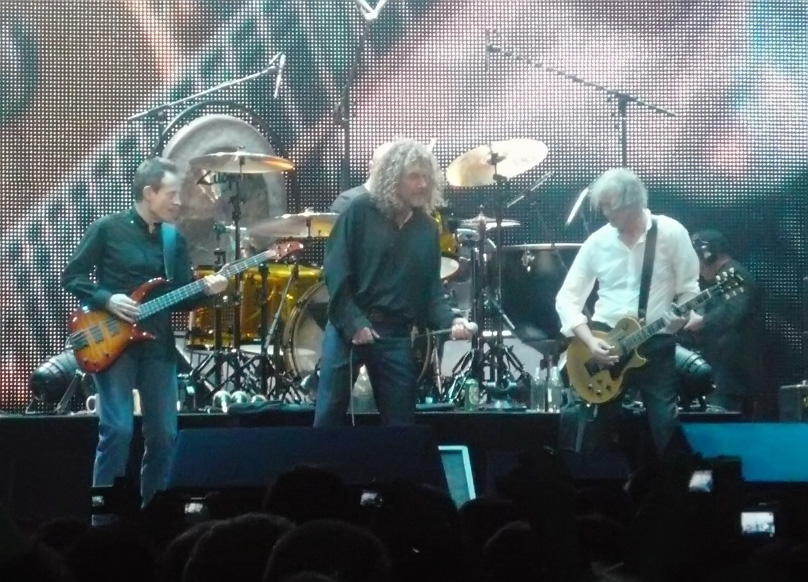

Great read Martyn.
Nice balance of nostalgia and social observations.
Excellent article!
I worked briefly in the Old Town in 1985 in offices above Comet (with a Sinclair C5 prominently in the window) and Waitrose. At my interview I was told of the number of pubs in the area but reassured that I didn’t have to visit them all during lunch time!
We missed each other by a few years, Tony, I left in 1982. I have some US beermats for you, byw, as requested – what’s your address?
Crikey, talk about Memory Lane (or Memory High Street, I suppose)… Glad you did it, so the rest of us don’t have to.
As far as I recall, my Stevenage underage drinking started at 16 in the Red Lion in 1970, having discovered the folk club in the room upstairs. George always reminded me of the teacher in Bash Street Kids, minus the mortar board. Those urinals… I swear I have had profound revelations about the nature of the universe, staring dizzily into them.
And the White Lion: so crowded on New Year’s Eve 1971 that you couldn’t have fallen over even if you had to. I can never hear “Maggie May” without being instantly transported back there. I lost my front teeth in an extremely brief and one-sided encounter out the back later in the new year…
Like you, I am disturbed by the eternal time-loop music seems to have entered in the last half century. Get your own music, kids! Preferably something I hate, like Dixieland Jazz…
Mike
It’s good to revisit old teenage haunts. Earlier this year I went back to Putney and went in a couple of Young’s pubs that I’ve not visited in 50 years – the Half Moon (still a great live music venue) and the Spotted Horse (much changed but very friendly and safe for unaccompanied women – that’s a change for the better).
I had a friend from uni who lived in Letchworth which, as you know, is a mere seven miles up the road from Stevenage. Being a town built by Quakers it was lacking in pubs! He lived in the centre and I seem to remember one pub which was standing room only. You had to leave the town to find a pub where you could get served!
We travelled for six months shortly afterwards and even found Beirut was better served by English pubs. OK, that is an exaggeration but it did have a Whitbread’s pub called the Duke of Wellington. Luckily we met a UK government official in that pub who generously shared his expense account and bought us vastly overpriced, tasteless, fizzy Trophy.
Very nice read! It strikes me as a successful use of Leigh Fermor’s “parallax” technique: the present-day writer and his young alter ego both reflect on the same journey, giving a richer picture than either could have achieved alone.
Must have been the visit to Leigh Fermor’s house last week that did it …
Excellent piece Martyn. Stirred some dormant but very happy memories of life in the High Street pubs in the early/middle seventies. Your description/recollection of the Marquis of Lorne is spot on. A great pub and as you say , frequently overwhelmed by happy,slightly inebriated youngsters. Very happy days. Thank you for taking me back to 1972.
Wasn’t Stevenage the basis of the pub crawl in ‘The Worlds End’?
No, that was Welwyn Garden City, the new towm to the south of Stevenage, and Letchworth, the new town to the north of Stevenage …
Martyn,
Strictly speaking, Letchworth GC is not a New Town as Stevenage and Welwyn GC are but (like Welwyn GC additionally is) a Garden City. I’m not sure that it was religious sentiment that made Ebeneezer Howard create a dry town as Peter Holford suggests, above. He was trying to make a socialist paradise and wanted working men to engage in cultural activities instead of hanging around in pubs. There’s a Wetherspoons, The Three Magnets, two minutes walk from the station now.
I believe the White Lion was renamed the Mulberry Tree because of the film, shot on location in Stevenage, Here We Go Round the Mulberry Tree. I can’t remember if any of that was shot at the White Lion, but there was a scene where some young people frolicked about outside another pub you may remember.
Haven’t seen Dave in a while, but last time I did he was sitting outside the Marquis. I suppose I won’t be seeing him around any more now, so I can’t ask how you’re getting on.
Hello, Tony, good to hear from you, hope you’re well. The trouble with the “named for the film” theory is that the film was called “Here We Go Round the Mulberry Bush“, not tree.
There was a song called Here we go round the lemon tree by The Move.
A good article. Funny, I don’t recall The Chequers. Of course, further along the High Street were The Yorkshire Grey, The Three Diamonds and, along the Great North Road, the Marquis of Granby. The Marquis of Lorne was the one I spent more time in. My first under age drink was in The Pig and Whistle at Aston. I left Stevenage in 1973. I lived in the Old Town.
[…] The ‘I was a teenage under-aged drinker’ 50th anniversary pub crawl.2) What White Claw Obsession Says About Our Changing Relationship to Alcohol.3) A note on South […]
[…] us with a wonderful long form essay on his personal experiences of drinking and going to the pub underage and revisiting his teen haunts as a seasoned […]
[…] One of our favourite sub-genres in beer writing is the nostalgic pub crawl and Martyn Cornell has delivered a classic of the form, revisiting his youthful haunts in the new town of Stevenage in Hertfordshire: […]